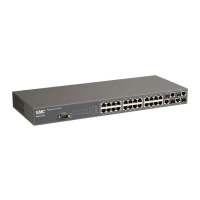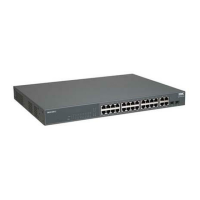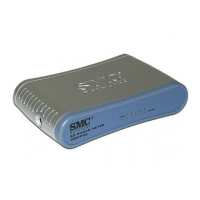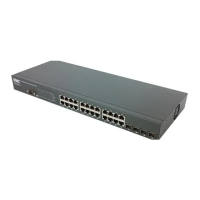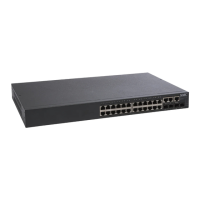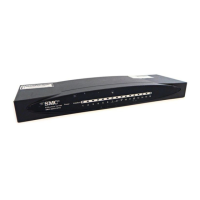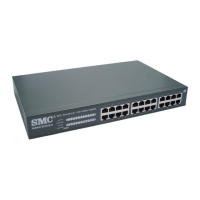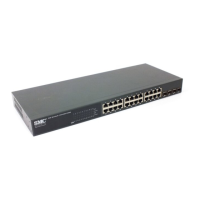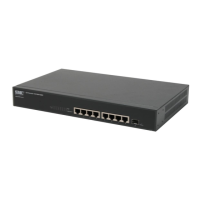DHCP R
ELAY
35-5
Example
In the following example, the device is reassigned the same address.
Related Commands
ip dhcp relay server (35-5)
ip dhcp relay server
This command specifies the addresses of DHCP servers to be used by the
switch’s DHCP relay agent. Use the no form to clear all addresses.
Syntax
ip dhcp relay server address1 [address2 [address3 ...]]
no ip dhcp relay server
address - IP address of DHCP server. (Range: 1-3 addresses)
Default Setting
None
Command Mode
Interface Configuration (VLAN)
Usage Guidelines
• You must specify the IP address for at least one DHCP server.
Otherwise, the switch’s DHCP relay agent will not forward client
requests to a DHCP server.
• To start DHCP relay service, enter the ip dhcp restart relay
command.
Console(config)#interface vlan 1
Console(config-if)#ip dhcp relay
Console(config-if)#end
Console#show ip interface
Vlan 1 is up, addressing mode is Dhcp
Interface address is 10.1.0.254, mask is 255.255.255.0, Primary
MTU is 1500 bytes
Proxy ARP is disabled
Split horizon is enabled
Console#
